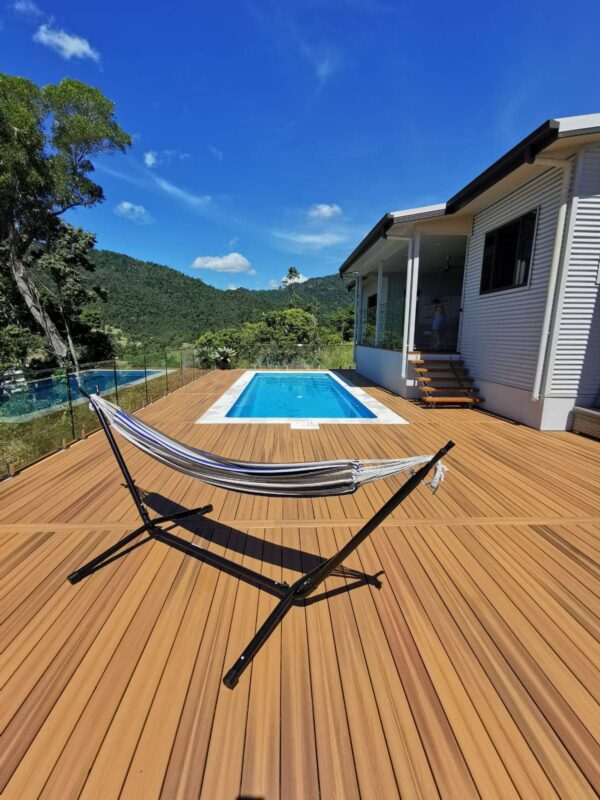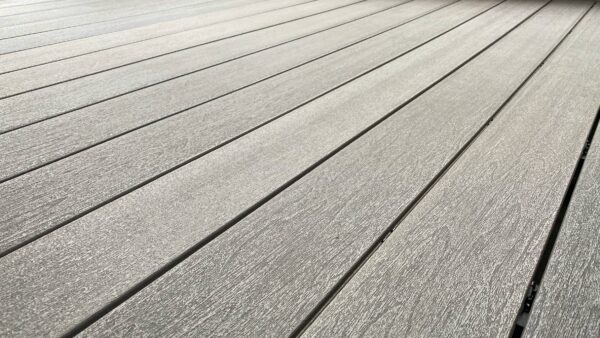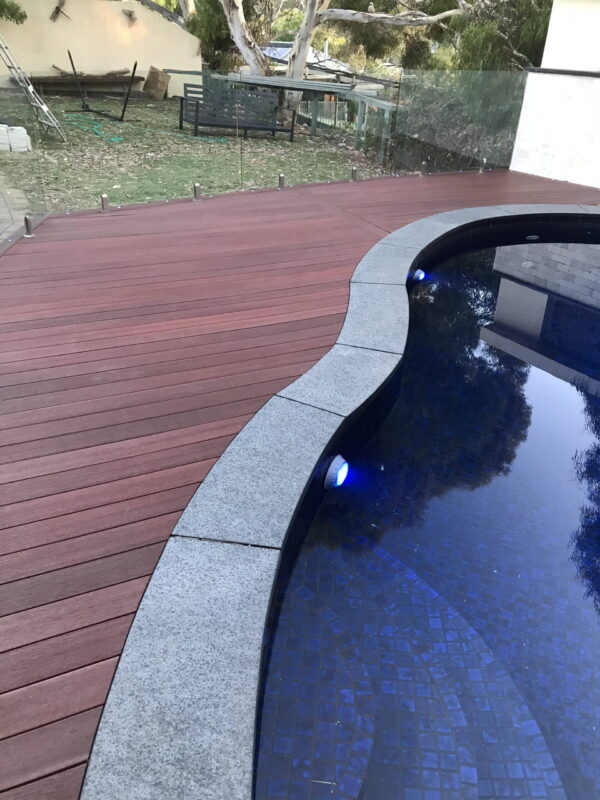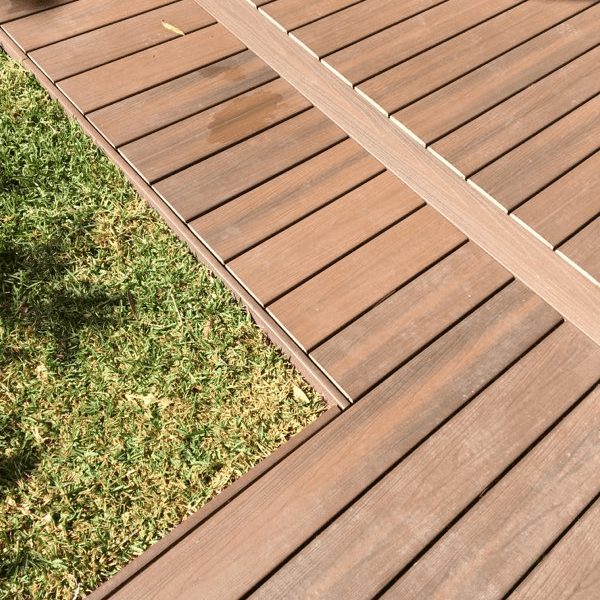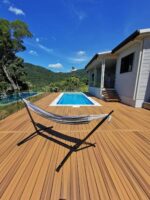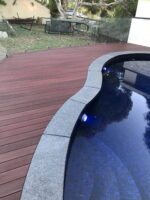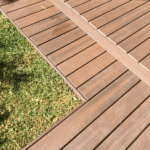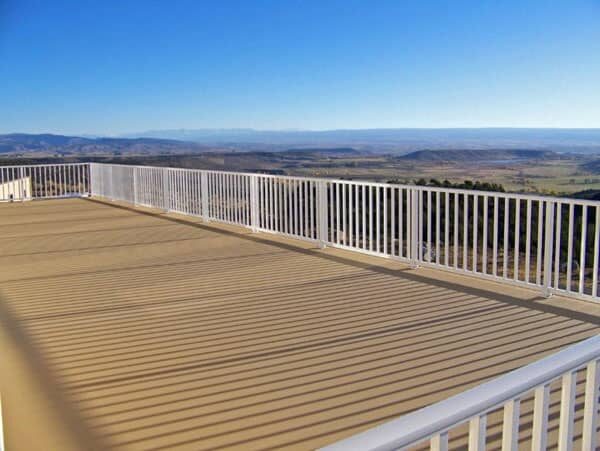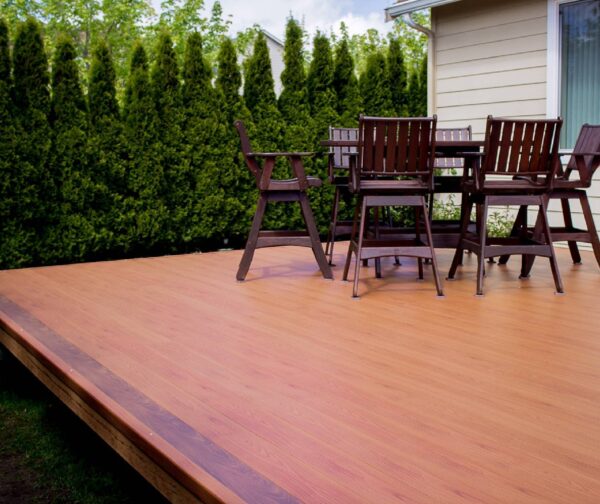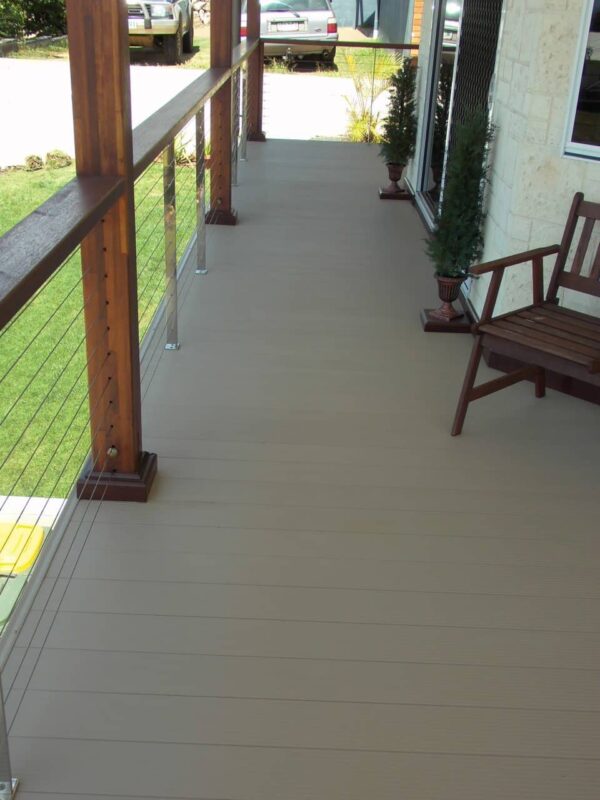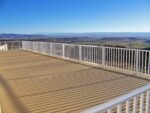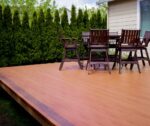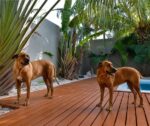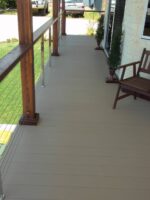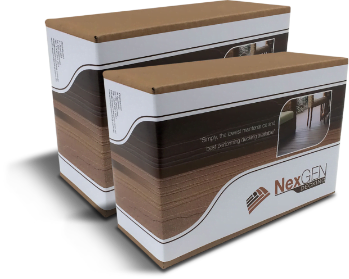With apologies to Tennessee Williams
Who among us has not stepped barefooted onto a hot surface and not have done a rendition of a cat on a hot tin roof?
Congratulations! You’ve learned an important lesson in physics and the conductivity of heat and how it is absorbed into various properties like the soles of our feet, or paws. Whether it’s asphalt, sand, concrete or tin, we are all aware that surfaces that spend a lot of time under direct sunlight get hot. What you may not have known is that some surfaces get hotter than others. You may go through life never utilising lessons from your high school physics class. But when deciding on which decking materials to use, it’s important to know just how hot your deck will get under the scorching Australian sun.
There is a lot of decking to choose from. The choices break down to 4 basic decking materials. Each of these has its plus and minuses concerning heat retention, durability, maintenance, and texture. The test encompassed: untreated and treated softwood, hardwood, composite and PVC, and aluminum decking.
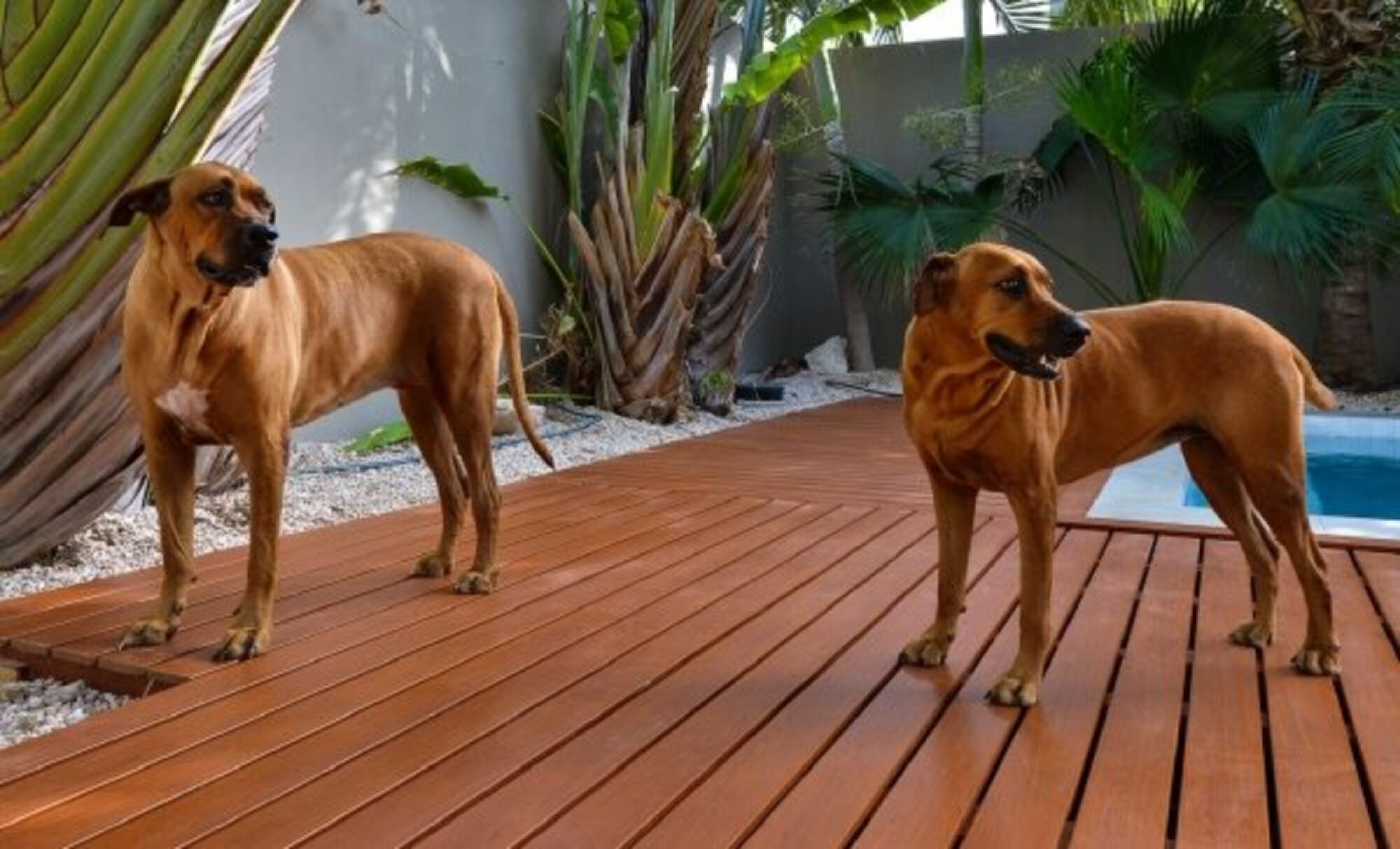
A Word about How the Heat Assessment Test Was Conduct
The testing was conducted in Lexington, MA, by Boston Decks and Porches located in the USA. Boston’s hot and humid August climate is approximate to that of Australia’s during the hottest month of the year. (Avg. Annual temp: 35 degrees Celsius), the test was conducted on a cloudless 30-degree Celsius day. Keep in mind that clouds can substantially decrease surface temps in only seconds because they effectively block the UV rays, the actual source of the heat transference. The items being subjected to the sun’s UV radiation were measured during the hottest (11:00 am to 3:00 pm) time of day with August temps ranging from 25 to 28 degrees Celsius. After 3:00 PM. the energy stored in the deck components begin to dissipate the heat.
Chipping Away at the Wood Options
Let’s compare the advantages and disadvantages of the softwood. At first glance, softwood sounds like a “Go-To”, one-size-fits-all solution. In fact, softwood decks are the most popular choice. One big reason for its popularity other than price is that it’s easy to work with which makes it popular for DIY projects and among contractors as well. However, there are many iterations of soft wooden decking. They span the spectrum of design options ranging from simple to ornate. On the affordable side, the least expensive timber include sustainable softwoods such as untreated pine, spruce, and fir. Softwood is a type of wood that is cut from trees belonging to the gymnosperm family. Let’s compare the advantages and disadvantages of this cost-effective solution.
Untreated vs Pressure Treated Pine
The Average Temp: 60 degrees Celsius
Untreated pine lumber can be used for decking but it’s not recommended. Untreated pine will not live up to the elements, requiring almost constant maintenance. Pressure-treated pine will last longer against the elements, but it still requires a sealant that needs to be applied every other year. For a time, lumber companies were using arsenic in the treatment of wood. It was effective against rot and mould. Unfortunately, it also made people and pets sick and it leached into vegetable gardens. These days, lumber companies employ a copper-based solution that’s more environmentally-friendly as well as user-friendly.
Untreated Softwood – Untreated pine, cedar, Douglas Fir, Juniper, Redwood, Spruce, and Yew.
The Average Temp: 41.1 degrees Celsius
Softwoods are more renewable than many hardwoods that are facing extinction. NexGEN estimates that 80% of all timber decks are derived from sustainable softwood such as untreated pine.
Untreated Hardwoods: Ipe, Australian Cypress Pine, Treated Ipe, Black butt, Brush box, Jarrah (Swan River Mahogany), Kari, Iron Bark, Myrtle Beech, Spotted Gum, and Victorian Ash (Alpine Ash)
Average Temp: 50 degrees Celsius
Hardwoods have more density than their softwood cousins. That makes it much harder to work with. It’s among the most expensive and least sustainable decking material when compared to softwoods. It’s estimated that this product of the world’s rainforests will be gone within the next 25 or 30 years. When deciding on one of these exotic species, check first with the Forestry Stewardship Council (FSC) to determine if your lumber dealer is a reputable business that’s certified by the FSC.
Treated Softwood: (pressure-treated Yellow Southern Pine-YSP)
The Average Temp: 52.7 degrees Celsius
Some decks look rich and fresh when they’re freshly minted. However. After a couple of years, they slowly turn grey or black. YSP resists the ageing process better than most wood, so you get a great looking deck that lasts for years to come.
Treated Hardwoods (Southern Yellow Pine)
Average Temp: 65.5 degrees Celsius.
A good shopping tip to remember is that the harder and denser a hardwood is, the more of the sun’s heat it will retain. The most popular hardwoods are deciduous trees. All hardwood decking like Black Locust grows faster than any other known hardwood trees. It’s use significantly reduces the demand on our diminishing tropical rainforests. We lose 1% of the world’s rainforests through lumber harvesting every year. So, choosing eco-friendly wood such as Sassafras, Eastern Juniper and Black Walnut are wonderful environmental and structural choices for hardwood decking. Cumaru (Dipterix Odorata) and Jarrah must be kiln-dried to minimize shrinkage and warping before installation.
Composite Decking From NexGEN
Capped Composite Decking Average Temperature: 55 Degrees Celsius
Fiberon leads the decking industry with a great line of 21st-century decking that’s built to last for 50 years and NexGEN/Fiberon guarantees it. Precision-made in the USA since 1997, Fiberon Decking is the preferred capped composite for DIY enthusiasts who love Fiberon for its engineering excellence and common sense construction. The material cuts like natural wood.
Create a tranquil outdoor retreat with Fiberon® Concordia/ Select decking. features our exclusive PermaTech® cap layer, providing superior stain and fade resistance.
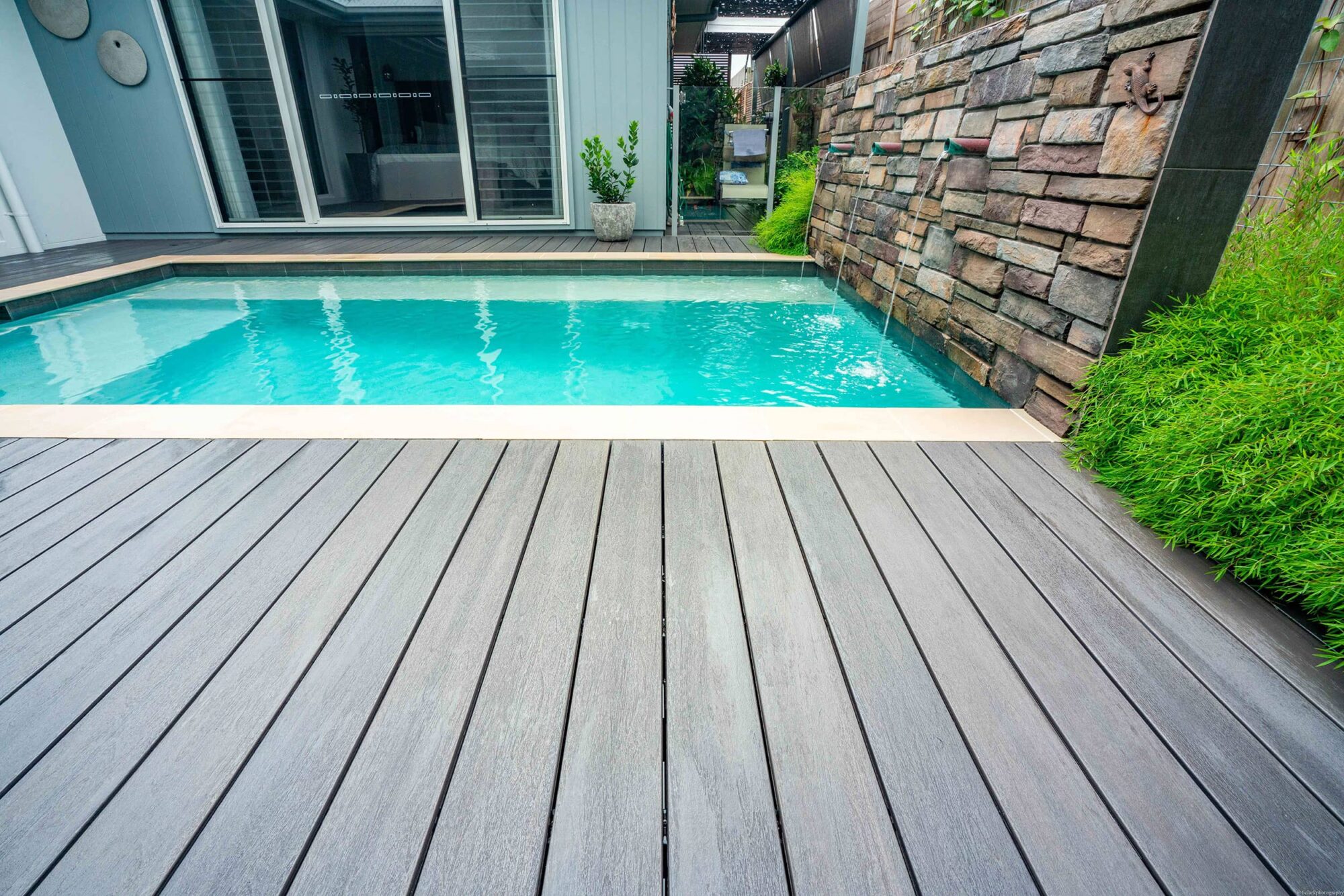
The benefits of Fiberon decking include:
The King of Cool: NexGEN Dry Deck
Aluminium Decking
Average temperature: Always Cool to the Touch
Ever wonder what is the best deck for a hot climate.
Aluminum decking is a great choice for all of your decking needs. It’s the coolest deck material known by man. It is lighter, stronger and more durable than wood or plastic. It is also waterproof, completely weather and pest-resistant, and 100 percent recyclable. Additionally, NexGEN aluminum DryDeck is slip and guaranteed to last a lifetime. The marine-grade aluminum and powder coat finish is upkeep-free outside periodic cleaning with soap and water. Other benefits include its:
- Non-combustible
- Family-friendly- no toxic chemicals to worry about.
- 100 % Waterproof- making the space underneath the deck.
- Uses industrial-grade durable powder coating to retard colour fading, and there’s no chipping or warping.
Important things to remember
The darker the stain the hotter it gets. When putting your hand on a hot surface, you’re not feeling the heat of the surface, you’re feeling the heat being transferred to your hand. Hot decking surfaces have resulted in second-degree burns on children.
What is Your City’s Average Temperature In January?
- Perth- 30 Degrees
- Brisbane – 29 Degrees
- Melbourne – 26 Degrees
- Sydney – 26 Degrees
- Adelaide – 29 Degrees
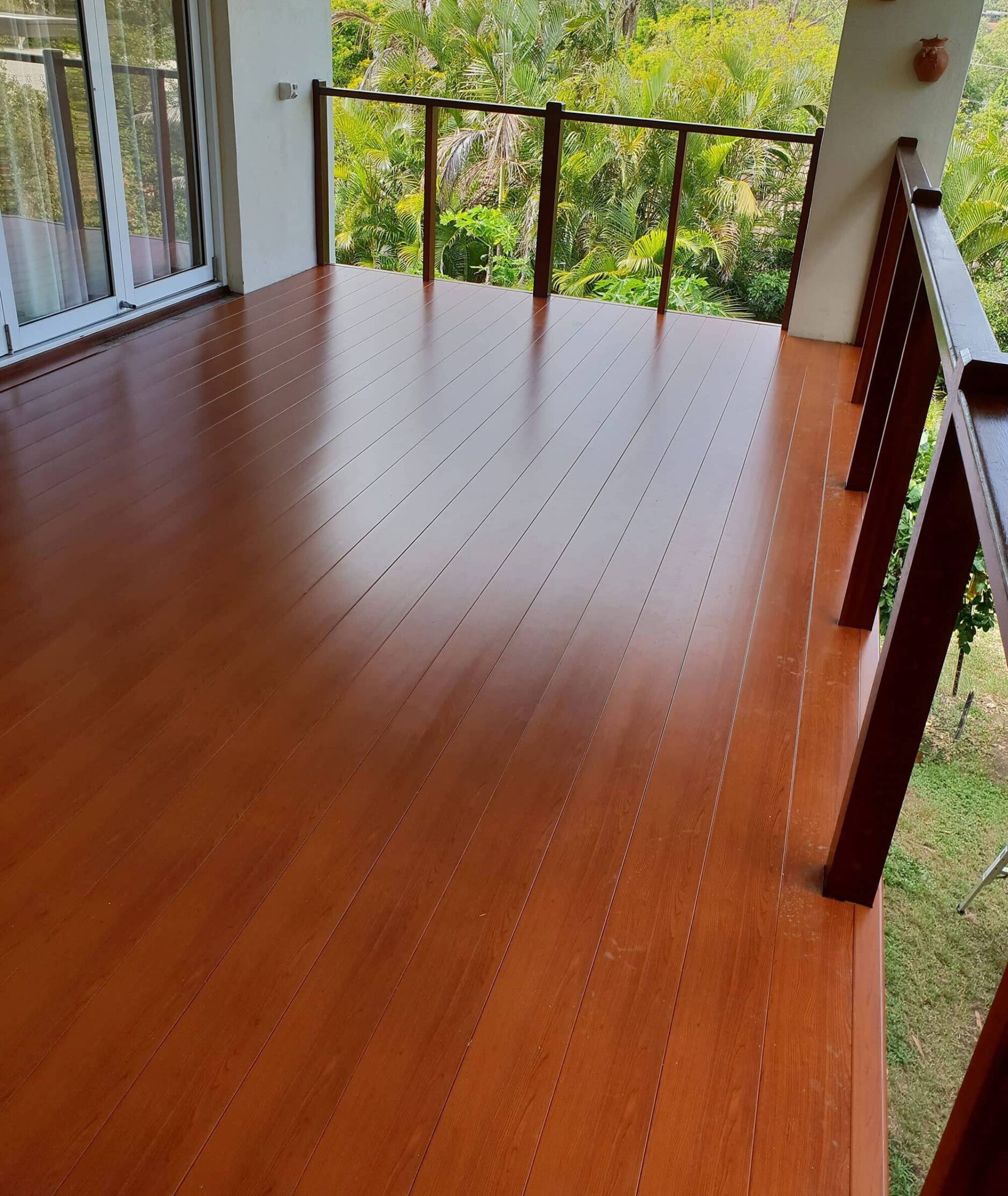
Contact Us
For more information on NexGEN’s great line of decking, contact us.
Products
Gallery
Contact
Direct Office Numbers
Adelaide – (08) 6316 0469
Brisbane – (07) 3041 6065
Melbourne – (03) 8672 6444
Sydney – (02) 8072 6220

